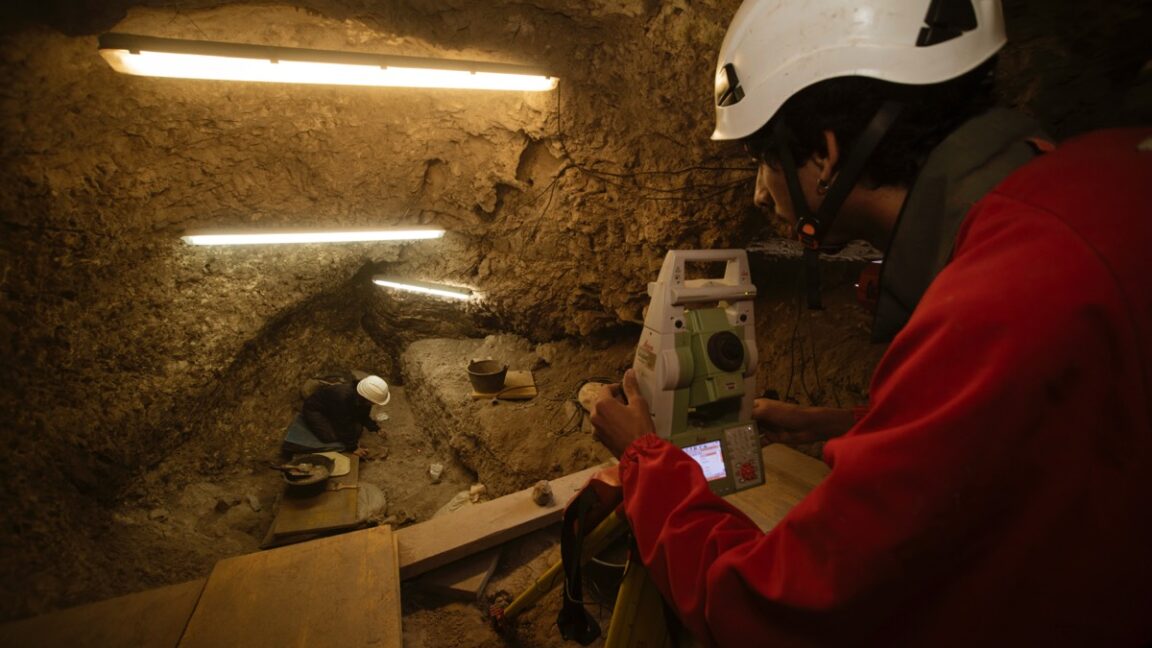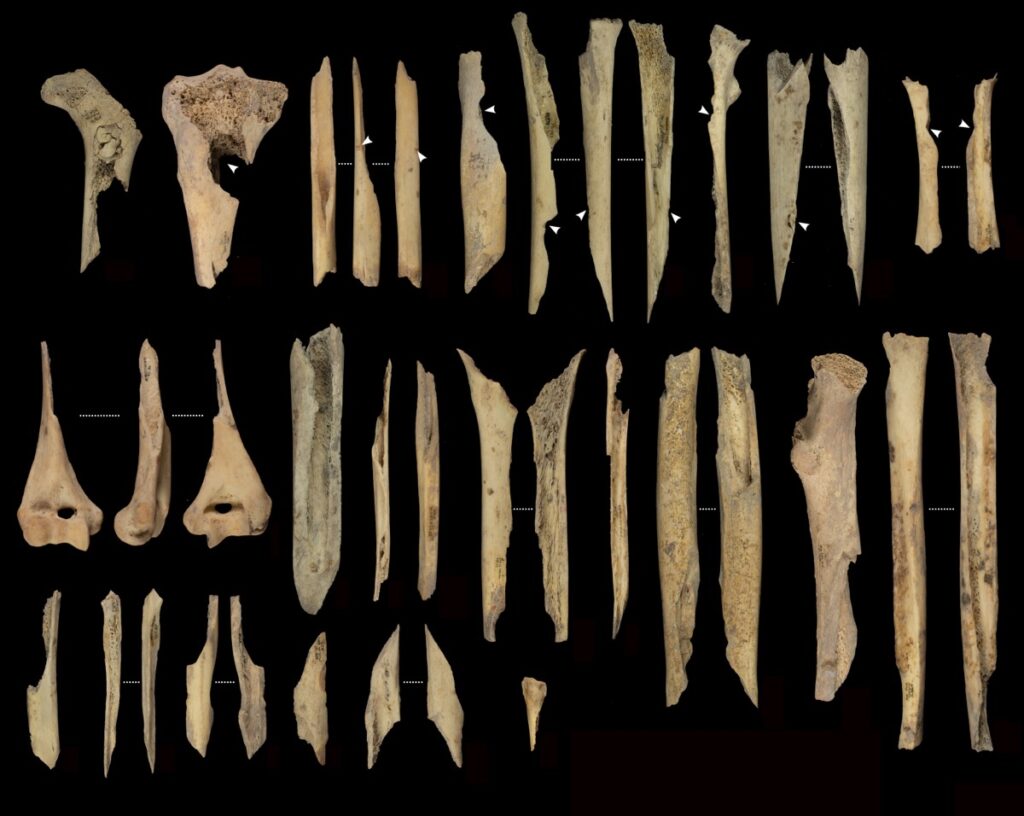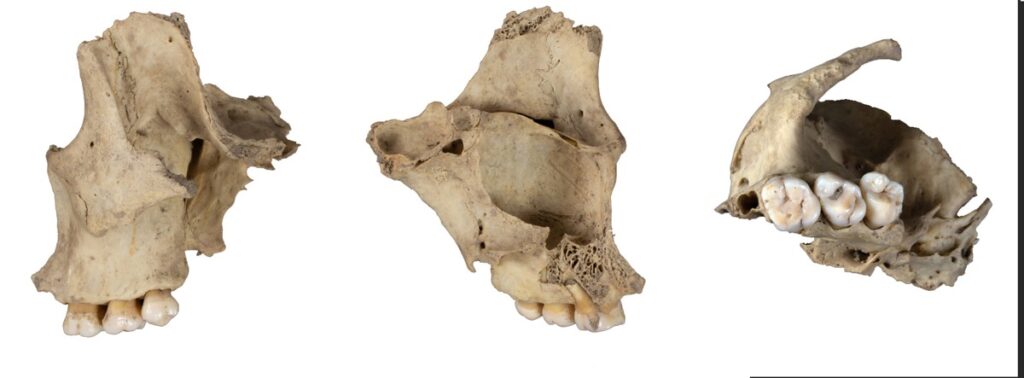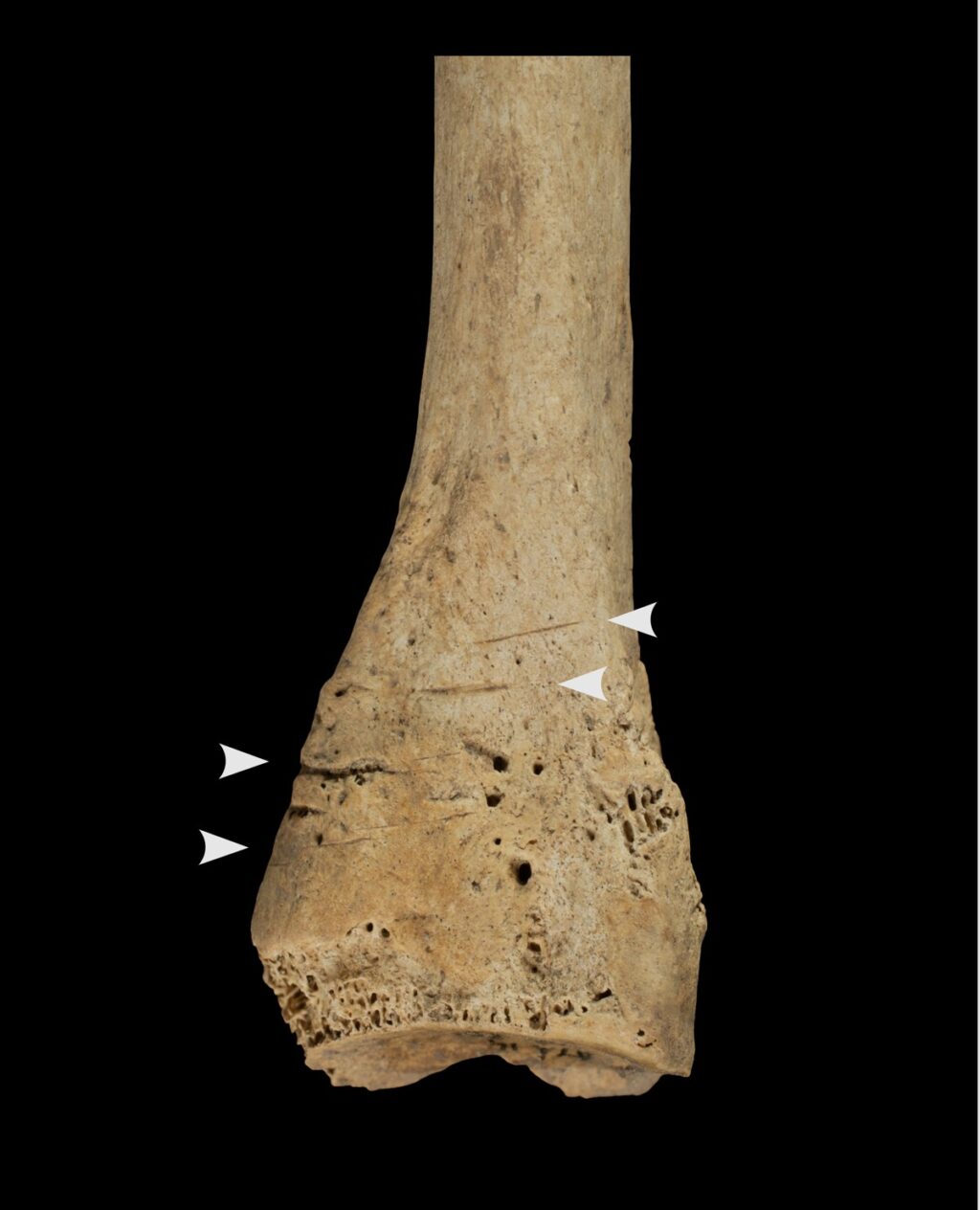Credit: IPHES-CERCA/Luis Quevedo/Madrid Scientific Films.
Human remains from 11 individuals recovered from El Mirador Cave in Spain showed evidence of cannibalism, archaeologists have concluded. According to a new paper published in the journal Scientific Reports, the cannibalism was likely the result of a violent episode between competing Late Neolithic herding communities about 5,700 years ago.
“Cannibalism is one of the most complex behaviors to interpret, due to the inherent difficulty of understanding the act of humans consuming other humans,” said co-author Palmira Saladié, a researcher at IPHES-CERCA and the Universitat Rovira i Virgili (URV). “Moreover, in many cases we lack all the necessary evidence to associate it with a specific behavioral context. Finally, societal biases tend to interpret it invariably as an act of barbarism.”
The El Mirador Cave is located at Sierra de Atapuerca, an archaeological site in the Burgos province of northern Spain. There is prior evidence of cannibalism at the Atapuerca site, including the remains of six Early Bronze Age humans, which included skull caps possibly used as containers during ceremonial consumption. In addition, since 1994, more than 160 bone fragments have been recovered from the Aurora Stratum (TD-6) in the Gran Dolina cavern at Sierra de Atapuerca. Over 30 percent of those fragments showed signs of butchering and consumption, such as slice marks, scrape marks, and chop marks.
This latest paper analyzed 5,056 human remains recovered from two sectors of El Mirador Cave using microscopy. Eight samples were selected for additional radiocarbon dating, with at least one bone taken from each stratigraphic level, and another five bones underwent strontium isotope testing.
The microscopy analysis revealed telltale slice marks, scrape marks, and chop marks, as well as evidence of cremation, peeling, fractures, and human tooth marks. This indicates the victims were skinned, the flesh removed, the bodies disarticulated, and then cooked and eaten. Radiocarbon dating placed the time between 5,700 and 5,570 years ago, while isotope analysis indicated the individuals were local and were probably eaten over the course of just a few days.
Infant human femur found at El Mirador, with percussion marks for marrow extraction.
IPHES-CERCA
Infant human femur found at El Mirador, with percussion marks for marrow extraction.
IPHES-CERCA
Fragmented and cannibalized limb bones.
IPHES-CERCA
Cannibalized human maxilla.
IPHES-CERCA
Cut marks on a foot bone.
IPHES-CERCA
Granted, it can be challenging to determine whether such marks are due to cannibalistic behavior, and the authors considered several alternative hypotheses. For example, there are funerary rituals that involve removing skulls or disarticulating the bodies, which would leave marks on the bones, but the authors note this would typically only affect between 1 to 5 percent of the remains. Injuries from weapons made of stone, metal, or bone can produce similar slice and chop marks, but these are usually found mainly on the ribs and vertebrae.




